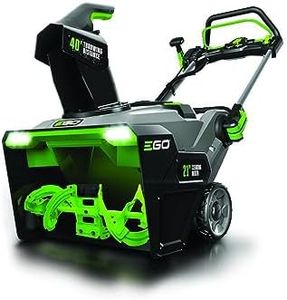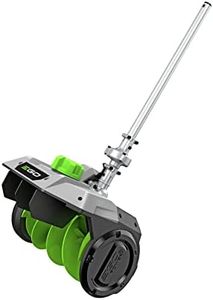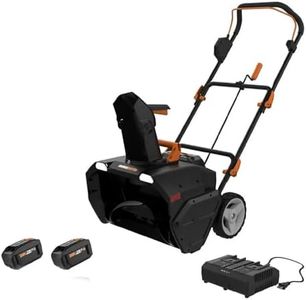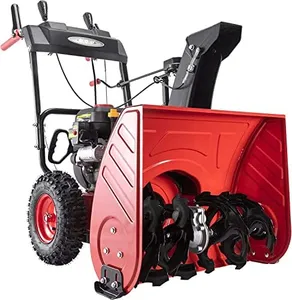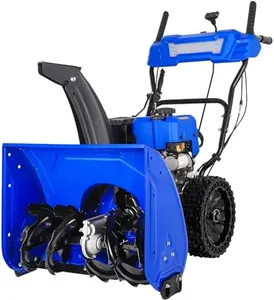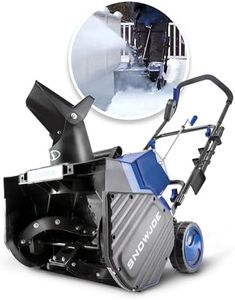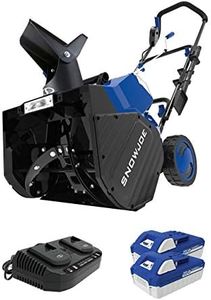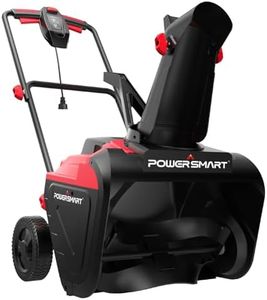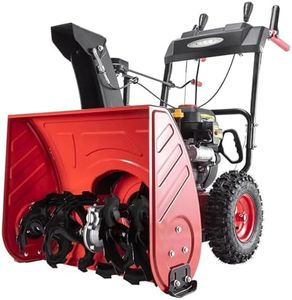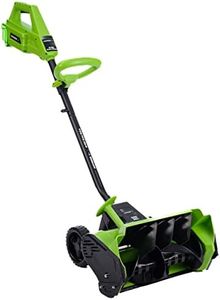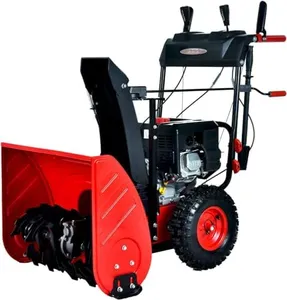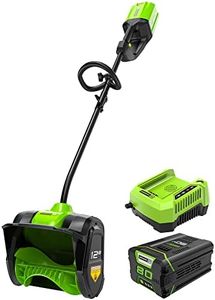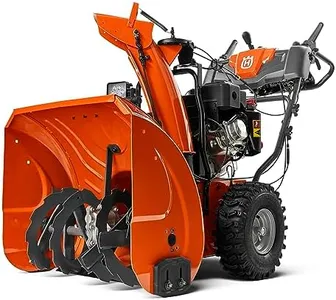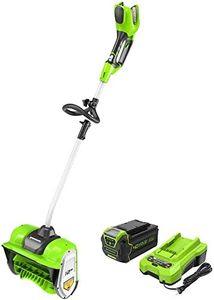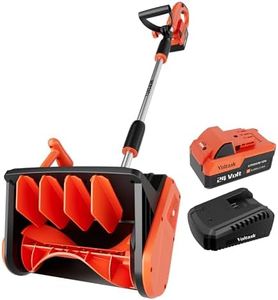We Use CookiesWe use cookies to enhance the security, performance,
functionality and for analytical and promotional activities. By continuing to browse this site you
are agreeing to our privacy policy
10 Best Snow Throwers 2025 in the United States
How do we rank products for you?
Our technology thoroughly searches through the online shopping world, reviewing hundreds of sites. We then process and analyze this information, updating in real-time to bring you the latest top-rated products. This way, you always get the best and most current options available.

Buying Guide for the Best Snow Throwers
Choosing the right snow thrower can make a big difference in how easily and efficiently you can clear snow from your driveway, sidewalks, and other areas. When selecting a snow thrower, it's important to consider the size of the area you need to clear, the typical snowfall in your region, and your physical capabilities. Understanding the key specifications will help you make an informed decision and ensure you get a snow thrower that meets your needs.Clearing WidthThe clearing width of a snow thrower refers to the width of the path it can clear in a single pass. This spec is important because it determines how quickly you can clear a given area. Snow throwers with a wider clearing width can clear large areas more quickly, but they may be harder to maneuver in tight spaces. For small driveways and walkways, a clearing width of 18-22 inches is usually sufficient. For larger areas, consider a clearing width of 24 inches or more. Choose a clearing width that matches the size of the area you need to clear and your ability to handle the machine.
Intake HeightThe intake height is the maximum depth of snow that the snow thrower can handle in a single pass. This spec is important for regions that experience heavy snowfall. If you live in an area with frequent, deep snowfalls, you'll need a snow thrower with a higher intake height to handle the snow efficiently. For light to moderate snowfall, an intake height of 12-18 inches is usually adequate. For heavy snowfall areas, look for an intake height of 20 inches or more. Consider the typical snowfall in your region when choosing the right intake height.
Stage TypeSnow throwers come in single-stage, two-stage, and three-stage models. Single-stage snow throwers are lightweight and best for light to moderate snowfall on paved surfaces. They use an auger to scoop and throw the snow. Two-stage snow throwers are more powerful and can handle heavier snowfall and uneven terrain. They use an auger to collect the snow and an impeller to throw it. Three-stage snow throwers are the most powerful and can handle the heaviest snowfall and ice. They use an accelerator in addition to the auger and impeller. Choose the stage type based on the severity of your snowfall and the type of surfaces you need to clear.
Power SourceSnow throwers can be powered by gas, electricity, or batteries. Gas-powered snow throwers are typically more powerful and can handle larger areas and heavier snowfall, but they require more maintenance and produce emissions. Electric snow throwers are lighter, quieter, and easier to maintain, but they are usually less powerful and require access to an electrical outlet. Battery-powered snow throwers offer the convenience of cordless operation but may have limited run time and power. Consider the size of the area you need to clear, the typical snowfall, and your preference for maintenance and environmental impact when choosing the power source.
Throw DistanceThe throw distance is how far the snow thrower can propel the snow away from the cleared area. This spec is important for ensuring that the snow is thrown far enough to avoid creating piles that need to be re-cleared. Snow throwers with a longer throw distance can clear larger areas more efficiently. For small areas, a throw distance of 15-20 feet is usually sufficient. For larger areas, look for a throw distance of 25 feet or more. Choose a throw distance that matches the size of the area you need to clear and the typical snowfall in your region.
ManeuverabilityManeuverability refers to how easy it is to handle and steer the snow thrower. This spec is important for ensuring that you can easily navigate the snow thrower around obstacles and tight spaces. Factors that affect maneuverability include the weight of the snow thrower, the type of wheels or tracks, and whether it has power steering. Lighter snow throwers and those with power steering are generally easier to maneuver. Consider your physical capabilities and the layout of the area you need to clear when choosing a snow thrower with the right level of maneuverability.
Most Popular Categories Right Now
